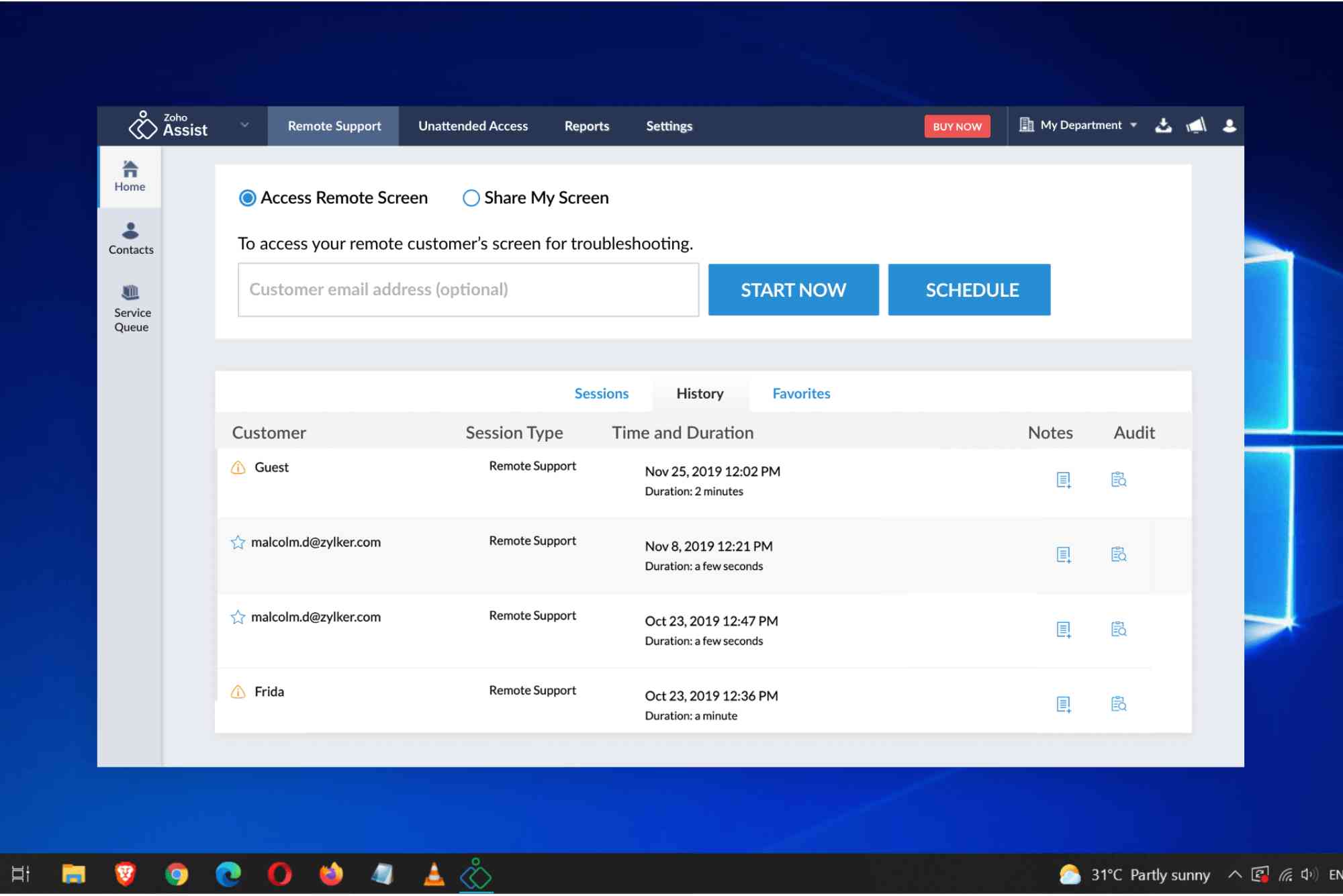Top 10 Remote Desktop Software You Should Try
In an increasingly hybrid and remote-first world, accessing your desktop from anywhere is no longer a luxury—it’s a necessity. Whether you’re a freelancer, IT technician, or enterprise manager, having the right remote access tool can dramatically improve your workflow. This blog explores the all remote desktop software list you should consider in 2025, based on reliability, security, speed, and user experience.
Remote desktop tools allow users to control a computer from a distance, just as if they were sitting in front of it. This is essential for remote support, virtual teamwork, and accessing files or software remotely. Let’s dive into the top solutions that stand out in performance and features.
Why Remote Desktop Software Matters More Than Ever
In today’s digital workplace, agility and remote accessibility are crucial. Companies use remote desktop software for a variety of purposes—from troubleshooting employee computers to accessing servers off-site. This saves time, reduces costs, and enables flexible working models.
Moreover, with rising cybersecurity threats, choosing software with robust encryption and authentication mechanisms is vital. That’s why this all remote desktop software list focuses on tools that offer a balance of performance and security.
The All Remote Desktop Software List Worth Exploring
Here’s a comprehensive guide to the top 10 remote desktop tools you can confidently use for professional or personal needs.
TeamViewer
TeamViewer is one of the most popular remote desktop applications globally. Known for its ease of use and quick setup, it supports multiple platforms including Windows, macOS, Linux, and mobile devices.
Key Features:
- Cross-platform remote access
- File transfer and session recording
- End-to-end encryption
- Multi-user support for meetings and IT support
Best For: IT teams, customer support, and enterprises needing secure sessions.
AnyDesk
AnyDesk is a lightweight yet powerful alternative. It offers smooth screen sharing with minimal latency, even on low-bandwidth connections.
Key Features:
- High frame rates (60 FPS)
- Low latency
- Mobile compatibility
- Banking-standard TLS encryption
Best For: Freelancers, SMBs, and tech professionals on the go.
Microsoft Remote Desktop
Microsoft’s built-in tool offers seamless integration with Windows devices and is great for remote administration of corporate networks.
Key Features:
- Native Windows support
- Easy setup via IP address or PC name
- No additional software needed
- Supports RemoteFX for graphics acceleration
Best For: Windows-centric environments and internal IT support.
Chrome Remote Desktop
If you need something simple and browser-based, Chrome Remote Desktop is ideal. It works via the Chrome browser and doesn’t require installing a separate app.
Key Features:
- Web-based access
- Supports all major operating systems
- Simple interface
- Free to use
Best For: Casual users and small teams needing quick access.
Splashtop
Splashtop combines performance with affordability. It offers remote desktop solutions tailored for personal use, business teams, and education.
Key Features:
- HD-quality streaming
- Multi-monitor support
- Easy access from mobile and tablets
- Scheduled access and user management
Best For: Educators, managed service providers (MSPs), and remote workers.
Zoho Assist
Zoho Assist is a cloud-based remote support and access platform designed for both IT teams and individual professionals.
Key Features:
- Remote support and unattended access
- Voice and video chat
- Custom branding
- Integration with other Zoho apps
Best For: Help desk professionals and companies already using Zoho’s ecosystem.
Parallels Access
Parallels Access offers a unique mobile experience, making remote desktop use from tablets and smartphones intuitive and smooth.
Key Features:
- App Launcher for easy access
- Remote access to Mac and Windows
- Full-screen experience on mobile
- Clipboard synchronization
Best For: Mobile professionals who work across devices.
VNC Connect
VNC (Virtual Network Computing) Connect by RealVNC is a versatile solution that focuses on secure, encrypted connections.
Key Features:
- Cloud and direct connection options
- Flexible licensing
- Multi-factor authentication
- Real-time chat and session recording
Best For: Developers and IT administrators who prefer a customizable experience.
LogMeIn Pro
LogMeIn Pro is tailored for businesses requiring high-speed access and large-scale remote deployment.
Key Features:
- 1TB file storage
- Remote printing
- Multi-monitor display
- Password management tool included
Best For: Medium to large enterprises with complex IT setups.
RemotePC
RemotePC is known for affordability, strong performance, and easy collaboration features.
Key Features:
- Always-on remote access
- Collaboration tools like whiteboards
- Scalable for teams
- Compatible with all major platforms
Best For: Budget-conscious teams, small businesses, and consultants.
How to Choose the Best Remote Desktop Software
When browsing an all remote desktop software list, it’s crucial to understand what your specific needs are. Here are factors to consider before making a decision:
Security and Compliance
Opt for tools with 256-bit encryption, multi-factor authentication, and GDPR compliance, especially for business use.
Platform Compatibility
Ensure the software supports all operating systems you plan to use—Windows, macOS, iOS, Android, and Linux.
Speed and Reliability
Look for software with low latency, high frame rates, and the ability to maintain stable connections even on weak networks.
User Experience
A simple interface can save hours of training. Tools like AnyDesk and Chrome Remote Desktop excel in usability.
Collaboration Features
Some tools allow screen sharing, file transfer, or remote printing, making team collaboration seamless.
Benefits of Using Remote Desktop Software
Remote desktop software can transform how you work or manage IT resources. Some of the standout advantages include:
- Enhanced productivity: Access files and applications from anywhere.
- Reduced costs: Eliminate the need for physical presence or travel.
- Better support: Offer real-time assistance without being on-site.
- Greater flexibility: Work across devices, including tablets and smartphones.
- Secure connections: Most solutions use strong encryption to protect sessions.
Common Mistakes to Avoid
While choosing from an all remote desktop software list, avoid these pitfalls:
- Ignoring security settings
- Not testing for performance under real conditions
- Choosing software without proper customer support
- Overpaying for features you don’t need
- Not checking mobile compatibility
FAQs
What is the most secure remote desktop software?
Many experts consider TeamViewer and VNC Connect to be highly secure due to end-to-end encryption and multi-factor authentication.
Is there a completely free remote desktop solution?
Yes, Chrome Remote Desktop is entirely free and works across all platforms via the Chrome browser.
Can remote desktop software be used on a phone?
Absolutely. Tools like AnyDesk, Parallels Access, and RemotePC have full-featured mobile apps for iOS and Android.
Do I need the internet to use remote desktop software?
Most modern tools require internet access, especially for cloud-based features. However, local network (LAN) remote access is also possible with tools like VNC.
Which is better: TeamViewer or AnyDesk?
It depends on your needs. TeamViewer is great for business environments with its robust features. AnyDesk offers excellent speed and is more lightweight.





